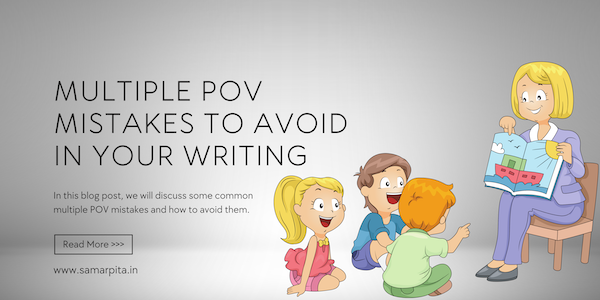Writing a novel or a story with multiple points of view (POVs) can be a challenging and rewarding experience. It allows readers to see the same story from different perspectives, bringing depth and complexity to the narrative. However, writing from multiple POVs can also lead to mistakes that can confuse and frustrate readers. In this blog post, we will discuss some common multiple POV mistakes and how to avoid them.
Also Read: Overcoming Writer’s Block: Advice for Editors
Mistake #1:
Switching POVs too often One of the most common multiple POV mistakes is switching between characters’ POVs too frequently. This can be disorienting for readers, who may have a hard time keeping track of who is narrating the story. To avoid this mistake, limit the number of POVs in your story and make sure each character’s perspective adds something important to the narrative. Also, try to establish a pattern for POV switches, such as switching at the beginning of a new chapter or after a major event.
Mistake #2:
Using too many similar POVs Another mistake writers make is using too many similar POVs. If all your characters have similar personalities, perspectives, and experiences, the story can become monotonous and repetitive. To avoid this, make sure your POVs are diverse and distinct. Each character should have a unique voice, worldview, and backstory that informs their perspective on the story.
Also Read: Mastering Point of View: Understanding the Pros and Cons of Each Perspective
Mistake #3:
Showing the same scene from multiple POVs While it can be tempting to show the same scene from multiple POVs to give readers a fuller picture of what happened, this can also be a mistake. It can lead to redundancy and slow down the pace of the story. Instead, use POVs strategically to reveal different aspects of the story that are not apparent from a single perspective.
Mistake #4:
Head-hopping Head-hopping is when the narrative switches between characters’ POVs within the same scene or paragraph, without clear transitions or markers. This can be confusing and disorienting for readers, as it’s hard to keep track of whose thoughts and feelings we are supposed to be following. To avoid this, make sure to clearly establish the POV at the beginning of each scene or paragraph and stick to it throughout.
Also Read: Killing Your Darlings: The Art of Cutting Unnecessary Words
Mistake #5:
Neglecting the main character’s POV In a multiple POV story, it’s easy to get carried away with secondary characters and neglect the main character’s POV. This can lead to a lack of focus and direction in the narrative. To avoid this, make sure the main character’s POV is prominent and distinct from the other characters. Their perspective should anchor the story and provide a clear through-line for readers to follow.
Multiple POVs can be a powerful tool for storytelling, but only if used wisely. To avoid common mistakes, limit the number of POVs, make sure each character’s perspective adds something unique to the narrative, use POVs strategically, avoid head-hopping, and prioritize the main character’s POV. By following these guidelines, you can create a rich and compelling multiple POV story that engages and satisfies readers.
This post is part of #BlogchatterA2Z challenge
***
If you are looking for an excellent manuscript editor, someone to create content for your business, or an expert to help build your personal or professional brand on social media, then look no further and connect with me at editor@samarpita.in I can be followed on instagram at @samarpita and on twitter at @samarpitadotin.
***********
Read my ebook WRITE. EDIT. PROMOTE. to learn the basics about becoming an author – from writing your own book, to editing your first draft, and to promoting your book yourself! You can also read my ebook How To Write A Story Effectively and learn some valuable lessons about how a story can go from average to extraordinary. This book is part 1 of the series.
In fiction, I have two short stories for children in an ebook called Bedtime Stories.

